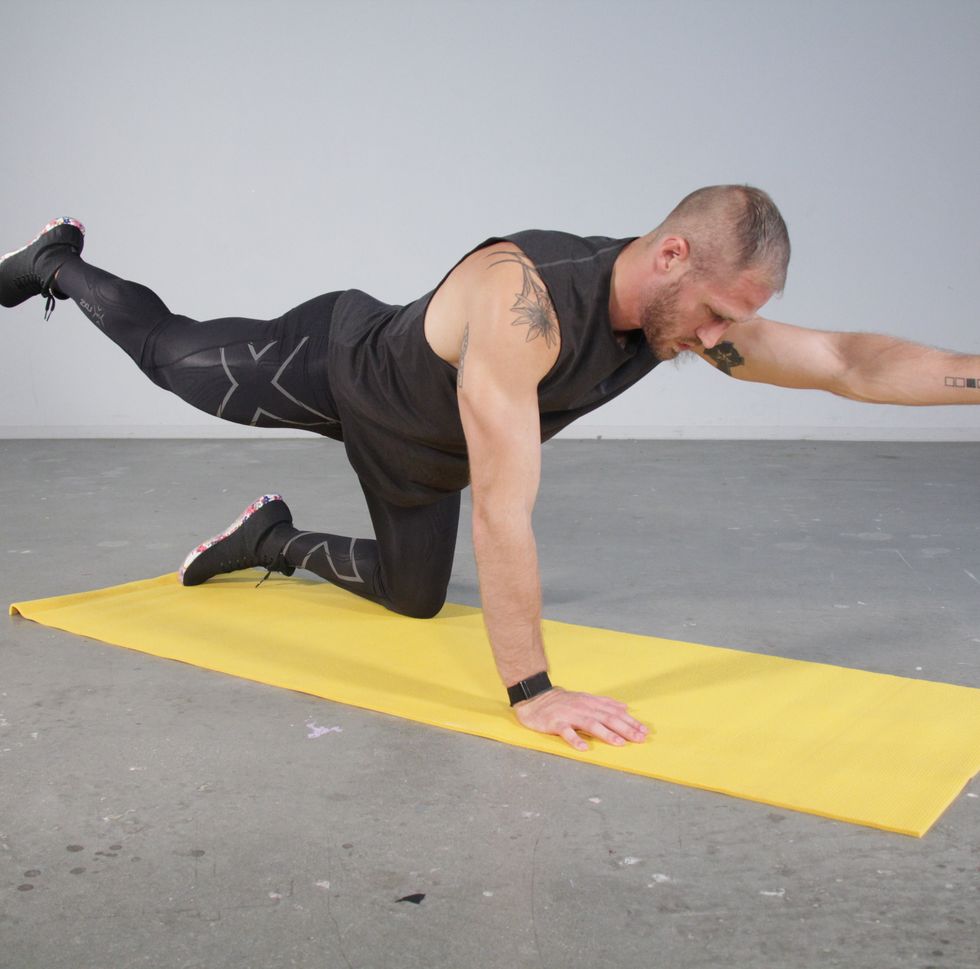
Do you want a strong core? If the answer is yes (it absolutely should be, since it stabilizes and drives your body forward while running), your core training should be focused on more than just pumping through some half-hearted crunches and leg lifts after your runs or strength sessions.
You need to give this essential muscle group the attention it deserves—and that means diversifying your workout’s repertoire.
You’ve likely held plenty of planks over your training career, but there’s another exercise that can hit your abs in a surprising, challenging way. Flip over from your supine crunch position to all fours for the bird dog, which will force you to get your brain involved in your ab work to a whole new degree.
In case you need a quick refresher on how to perform a bird dog, we’ve got you covered:
Start on all fours with wrists under shoulders, knees under hips, toes tucked, and back flat. Extend right arm and left leg straight out until they’re parallel to the floor. Maintain a flat back, level hips, and focus on pulling your belly button toward your spine. Return to all fours, then raise left arm and right leg. Continue alternating.
In order to make the most of the movement, you’re going to need to understand why you’re doing the bird dog, along with how to make sure you’re not shortchanging yourself with sloppy form.
Here, Men’s Health fitness director Ebenezer Samuel and fitness editor Brett Williams break down everything you need to know. The biggest key to the move? Maintaining total-body tension and complete control of the core, says Samuel.
Get your glutes firing
Unlike a plank, which has less direct glute engagement, the bird dog makes your body’s biggest muscle one of the key players, according to Samuel. When you lift up your leg, you have two choices: You can just hold it aloft, making sure to keep your foot off the floor, or you can raise your leg and squeeze the glute as hard as you can. Pick the second option to make the bird dog worth your while. Keeping your glutes engaged helps to keep your body balanced, which is the most important aspect of the movement.
Be intentional
The bird dog is at its best when you’re intentional and very focused on every movement, according to Samuel. Focus on keeping your torso fully parallel to the ground, hips and shoulders always square.
Doing so will require complete core engagement for the life of the bird dog. If you’re having trouble, step through each limb’s movement in the bird dog before doing the full move. (And even if you’ve done the bird dog before, this can be a nice refresher course in how to fire up your core properly.)
Reach
You’re not just lifting your arm and leg off the ground and tightening your core. The bird dog is also a unique effective way to generate both shoulder and hip mobility—if you stretch your arm and leg out, according to Samuel. Lift your arm up, then reach out as far as possible (while still keeping your hips and shoulders square). Lift your back leg up and extend it behind you, again reaching back as far as possible. Reaching your leg behind you in particular has benefit, gently stretching your back extensors.
Look down
You may be tempted to look straight ahead when doing a bird dog, but don’t do that. Instead, look directly at your mat, keeping your head (and neck) in a nice neutral position, according to Samuel. This will prevent your back from arching, keeping any stress off your lower back.